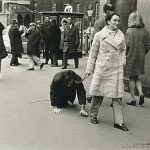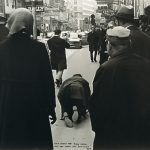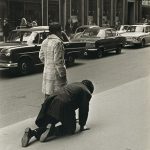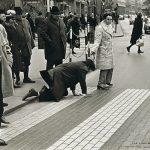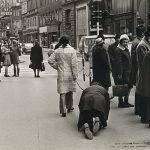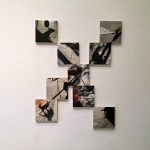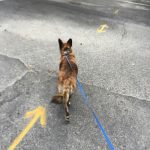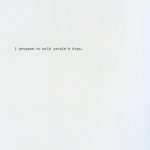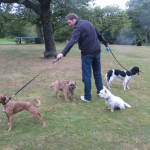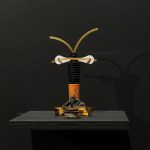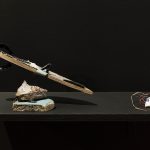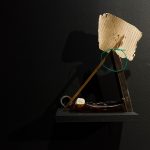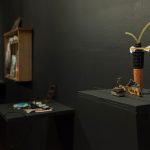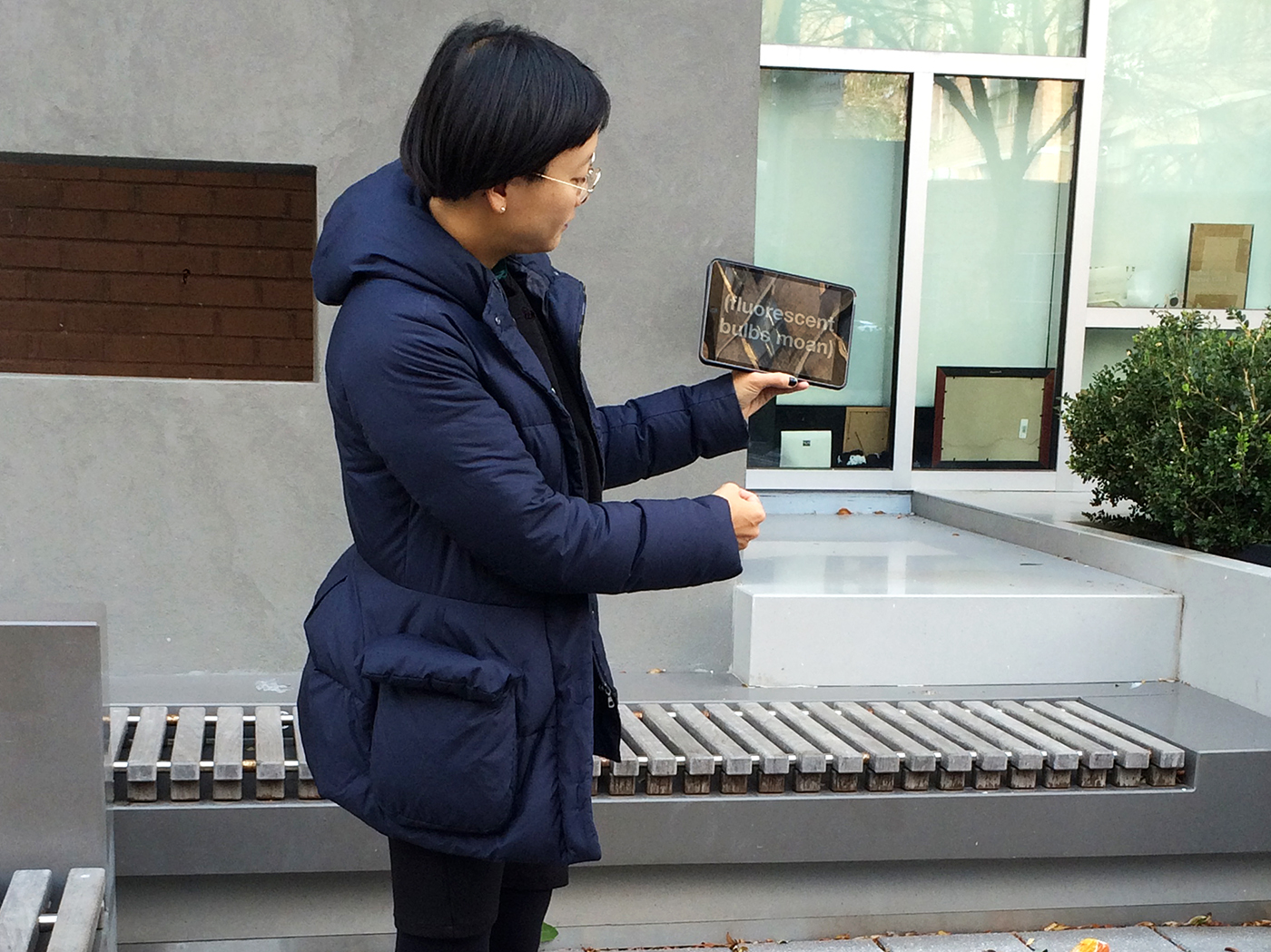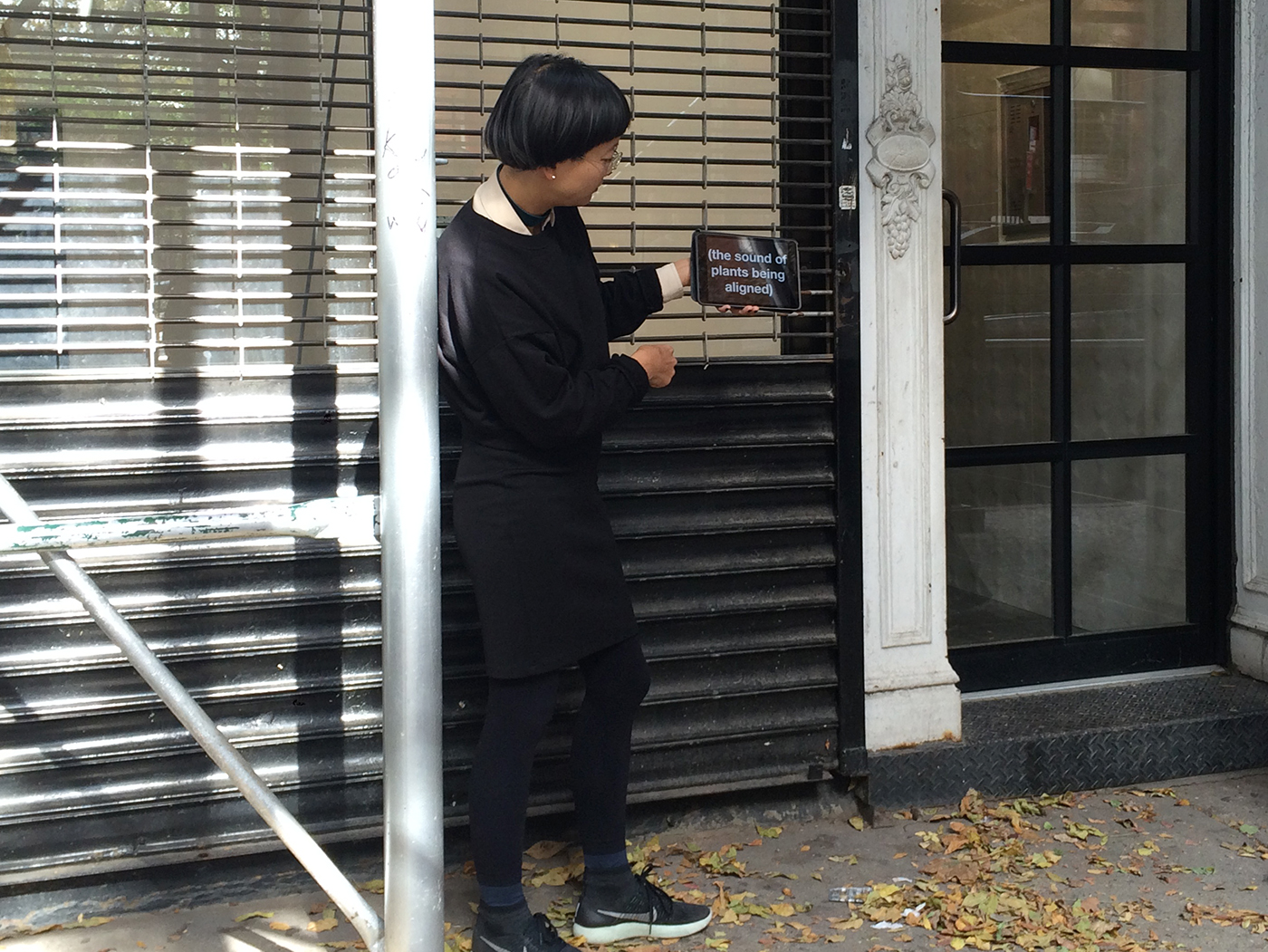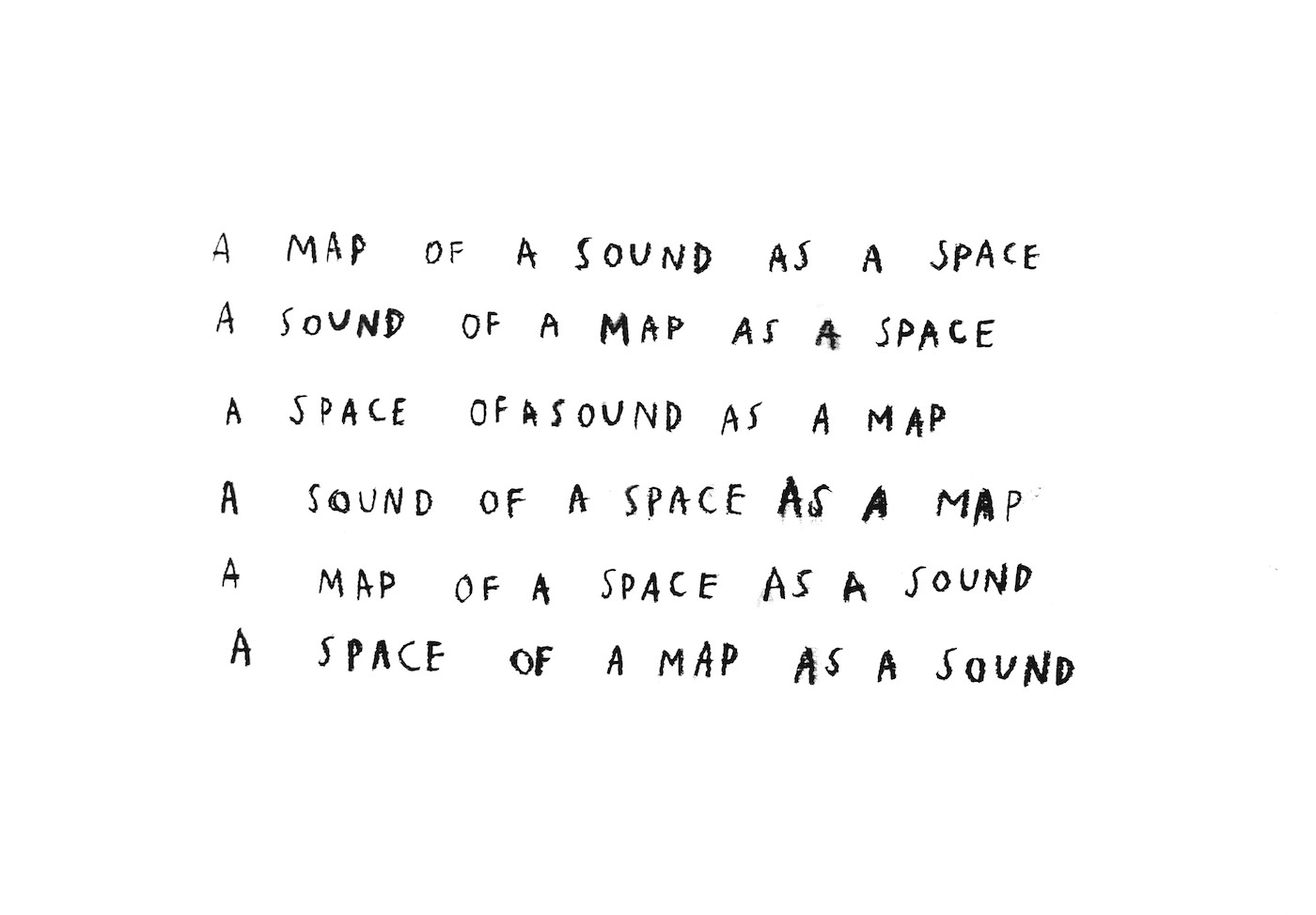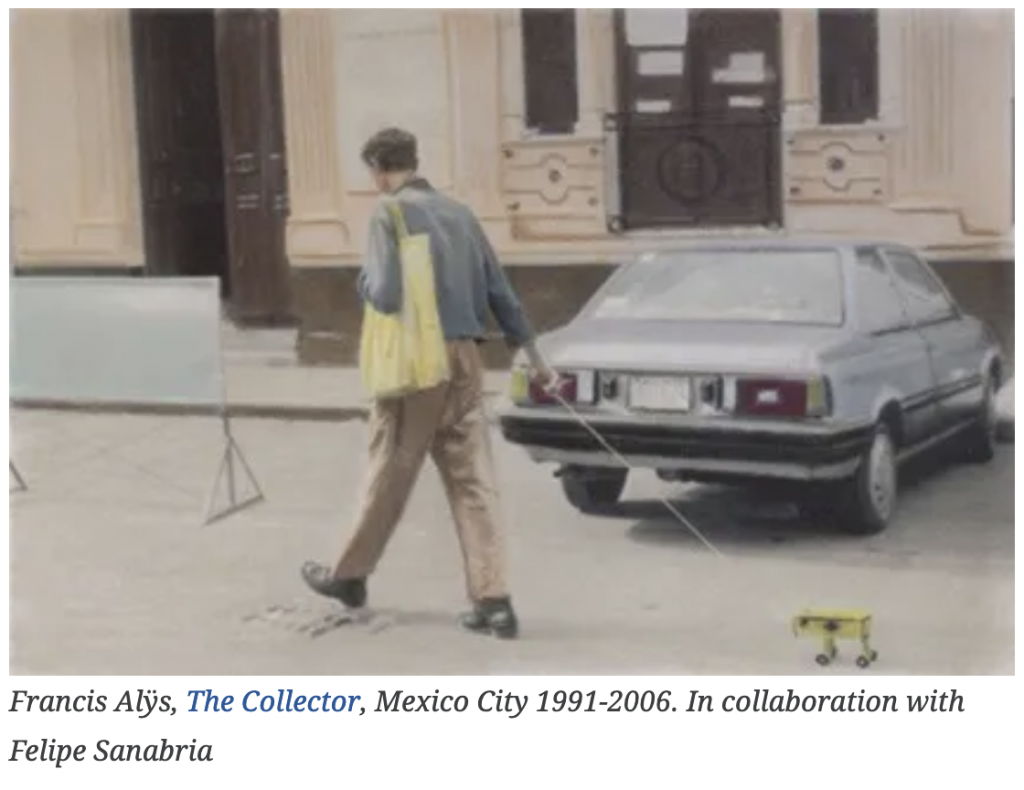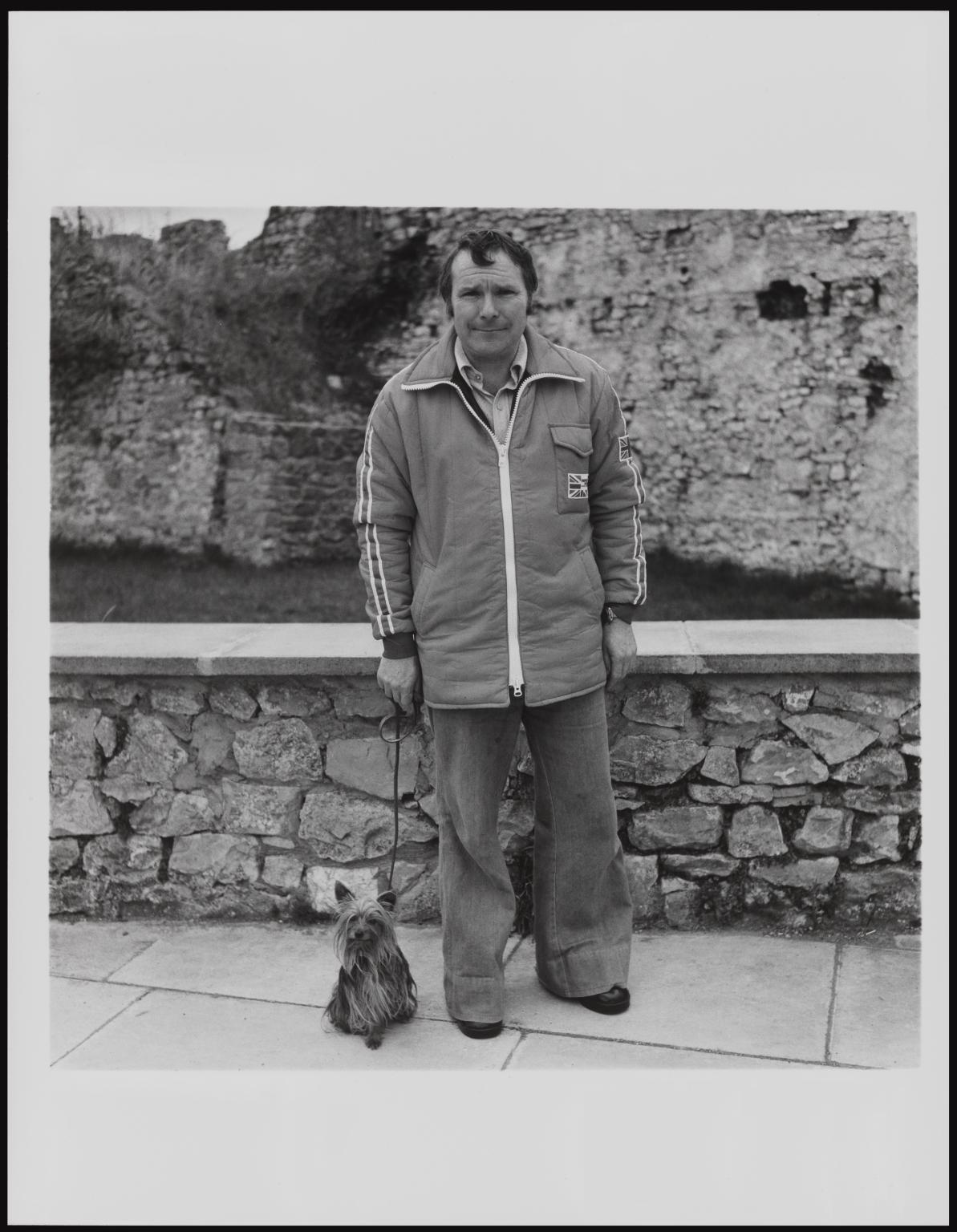
Walking the Dog 1976-9 Keith Arnatt 1930-2008 Presented by Tate Patrons 2010 http://www.tate.org.uk/art/work/T13051
“Walking the Dog is a large series of black and white photographs of individuals standing outside with their dogs. While the locations depicted in the photographs vary from street pavements and country lanes to parks and gardens, all the images in this series share consistent formal characteristics: in each case the single owner stands full-length in the centre of the image facing the camera with the dog at their feet, and no other human or animal can be seen within the tightly framed square shot.
The photographs were taken by the British conceptual artist Keith Arnatt (1930-2008) around his home in Tintern, Monmouthshire, between 1976 and 1979. During this three-year period Arnatt took over two hundred such pictures while walking in the area. Getting an individual to pose with their pet and to look directly at the camera proved to be a challenge, and so the artist devised a plan that involved calling out the name of the dog just as he was about to hit the release button. However, Arnatt recalled in 1993 that when he called out the name of the pet the owner would often turn away from the camera and check to see if their dog was behaving ‘correctly’. In many instances the owner would laugh, or the dog would look at the owner and become disinterested.
While the photographs on their own might not be so revealing, the consistency and repetition across the series – of poses, expressions and behavioural traits – testifies to the self-conscious ways in which different people choose to represent themselves in front of a camera. As Arnatt explained in a discussion of this body of work: ‘what interested me about photographs was the oddity of photographs that caught expression – things that people were doing while they were being photographed.’ (‘Oral History of British Photography: Arnatt, Keith (3 of 5)’, accessed 14 March 2014). By producing an artwork that mimicked in its scale and apparent neutrality the appearance of a sociological study, the ‘oddity’ of the photographs – exaggerated by the similar ways in which they are cropped and by the criteria by which they were selected – could be revealed, and thus serve to undermine the notion that photographs are objective documents of reality.
Seriality and repetition are key characteristics of minimal and conceptual art of the early 1970s and Walking the Dog can be seen as an example of a conceptual artwork that takes as its subject a social landscape particular to Britain. The sociological and national aspects of the series bear comparison to the early twentieth-century German photographer August Sander’s compendium of portraits of people from all walks of German life (see, for example, The Notary 1924, Tate AL00147), while the way in which Arnatt’s work registers a skepticism towards traditional forms of documentary and photojournalist practice aligns it with the work of Diane Arbus (1923–1971) and Martin Parr (born 1952), whose artistic projects critically address the framing of subjectivity by the medium of photography. Arnatt’s work often contains elements of subtle humour (see, for example, Portrait of the Artist as a Shadow of his Former Self 1969–72, Tate T07647) and with this in mind Walking the Dog may be seen to invite reflection on the familiar but farcical theory that dog owners resemble their pets.
The group of Walking the Dog works in the Tate collection (Tate T13047–T13086) were selected by the artist to be exhibited as a part of his solo exhibition at the Anthony d’Offay Gallery in London in 1979. Earlier, a smaller group of twenty-eight prints from the series was exhibited at the Whitechapel Art Gallery, London in 1977. A larger selection of fifty images from the series was published in book form in 1979 with an introductory text by the jazz singer and writer George Melly (1926–2007).
Further reading
George Melly, Walking the Dog, photographs by Keith Arnatt, London 1979.
Keith Arnatt, Rubbish and Recollections, exhibition catalogue, Photographers’ Gallery, London 1989, pp.4–5.
‘Oral History of British Photography: Arnatt, Keith (3 of 5)’, 14 April 1993, audio recording, http://sounds.bl.uk/Arts-literature-and-performance/Art-photography-and-architecture/021M-C0459X0036XX-0300V0, accessed 14 March 2014.
— Sylvie Simonds, March 2014. Revised by Andrew Wilson, February and July 2019″ [credit]
